Lab 8 - EE 420L
Engineering Electronics II
Author:
Matthew Meza
Email:
mezam11@unlv.nevada.edu
March
20th, 2015
Characterization
of the CD4007 CMOS transistor array
Pre-lab work
- Review the datasheet for the CD4007.pdf CMOS transistor array.
- Ensure that you
understand how the bodies of the NMOS are tied to pin 7 (VSS, generally
the lowest potential in the circuit, say ground) and that the bodies of
the PMOS are tied to pin 14 (VDD, generally the highest potential in
the circuit, say + 5V).
Lab Description
In
this lab you will characterize the transistors in the CD4007 and
generate SPICE Level=1 models. Assume that the MOSFETs will be used in
the design of circuits powered by a single +5 V power supply. In other
words, don't characterize the devices at higher than +5 V voltages or
lower than ground potential.
- Experimentally
generate, for the NMOS device, plots of:
- ID v. VGS (0 < VGS < 3 V) with VDS = 3 V
- ID v. VDS (0 < VDS < 5 V) for VGS varying from 1 to 5 V
in 1 V steps, and
- ID v. VGS (0 < VGS < 5 V) with VDS = 5 V for VSB varying
from 0 to 3 V in 1 V steps.
- Note that for this
last one, if VSS (NMOS body) is ground (again, the Body, VB, is
grounded) then the source voltage will be varied from 0 to 3 V in 1 V
steps to realize VSB ( = VS - VB = VS) varying from 0 to 3 V in 1 V
steps. At the same time VGS will be varied from 0 to 3 V (when VS = 0),
1 to 4 V (when VS = 1 V), 2 to 5 V (when VS = 2 V), and 3 to 5 V
(when VS = 3 V). In other words, as VS is increased by 1 V the VGS has
to shift up by 1 V as well.
- Assuming that the
length of the NMOS is 5 um and its width is 500 um calculate the
oxide thickness if Cox (= C'ox*W*L) = 5 pF.
- From this measured
data create a Level = 1 MOSFET model with (only) parameters: VTO,
GAMMA, KP, and TOX.
- Compare the
experimentally measured data above (the 3 plots) to LTspice-generated
data (again, 3 plots) and adjust your model accordingly to get better
matching.
- Experimentally,
similar to what is seen on the datasheet (AC test circuits seen on page
3 of the datasheet), measure the delay of an inverter using these
devices (remember the loading of the scope probe is around 15 pF and
there is other stray capacitance, say another 10 pF).
- Using your model
simulate the delay of the inverter and compare to measured results.
Adjust your SPICE model to get better matching between the experimental
data and the measured data.
- Repeat the above
steps for the PMOS device where VDS, VGS, and VSB are replaced with
VSD, VSG, and VBS respectively.
Lab Data
NMOS Experiment 1
Using a sample resistor of 100 Ohms
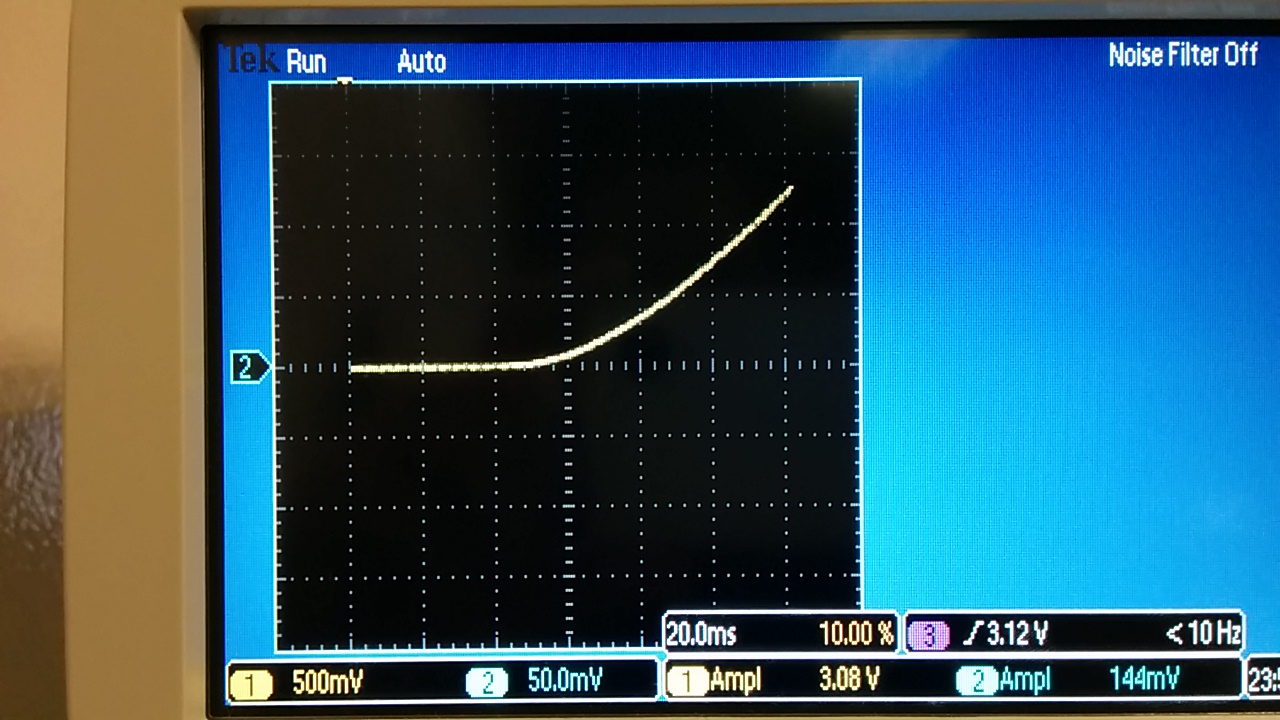
NMOS Experiment 2 using a sample resistor of 200 Ohms
VGS = 1V
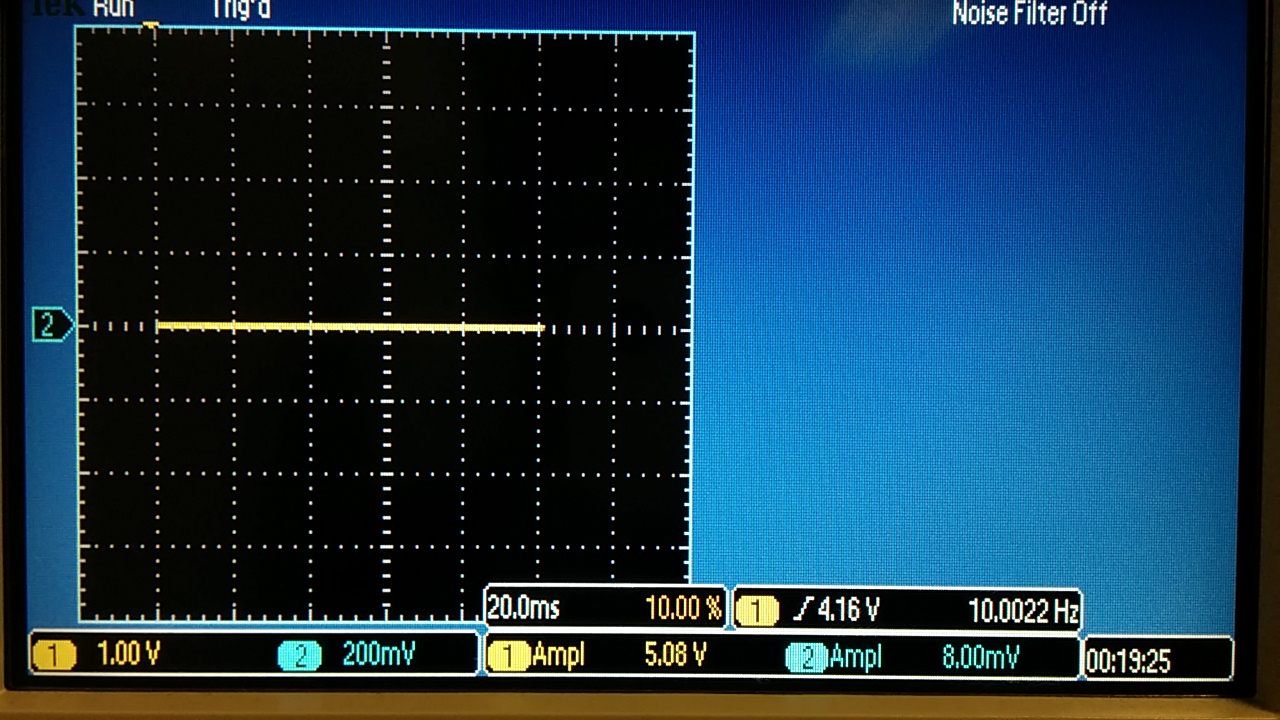
VGS = 2V

VGS = 3V
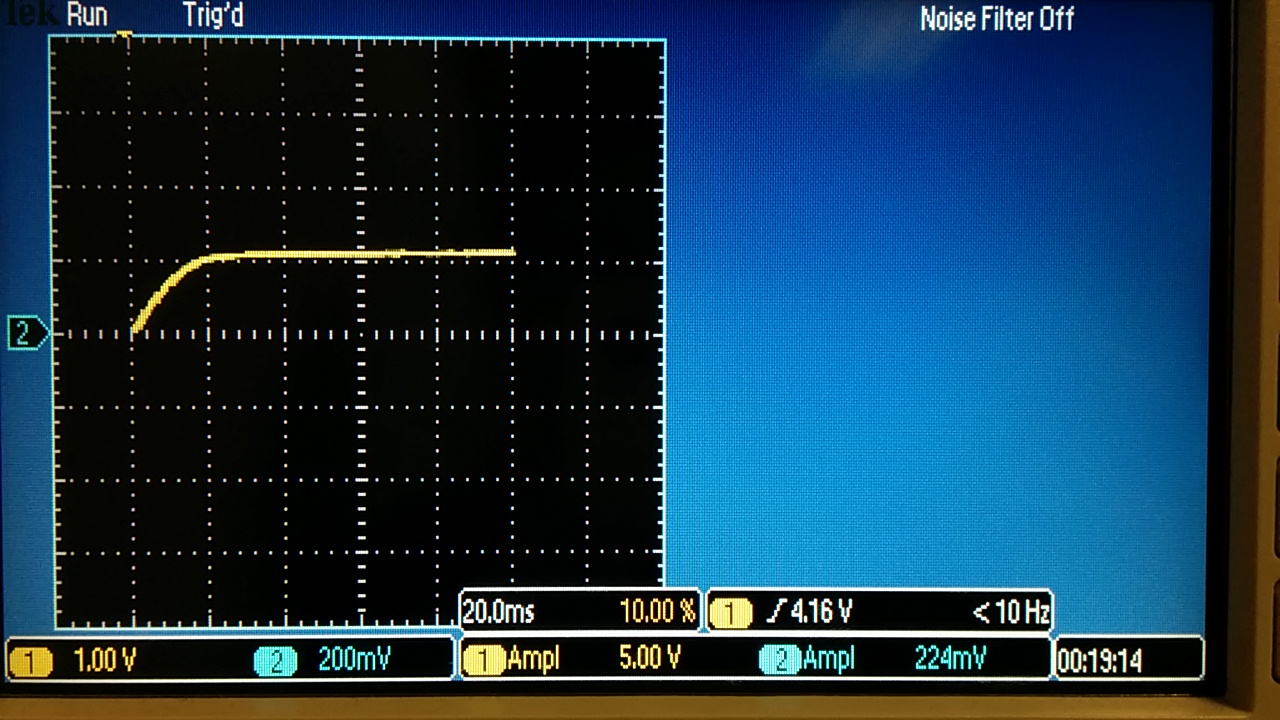
VGS = 4V
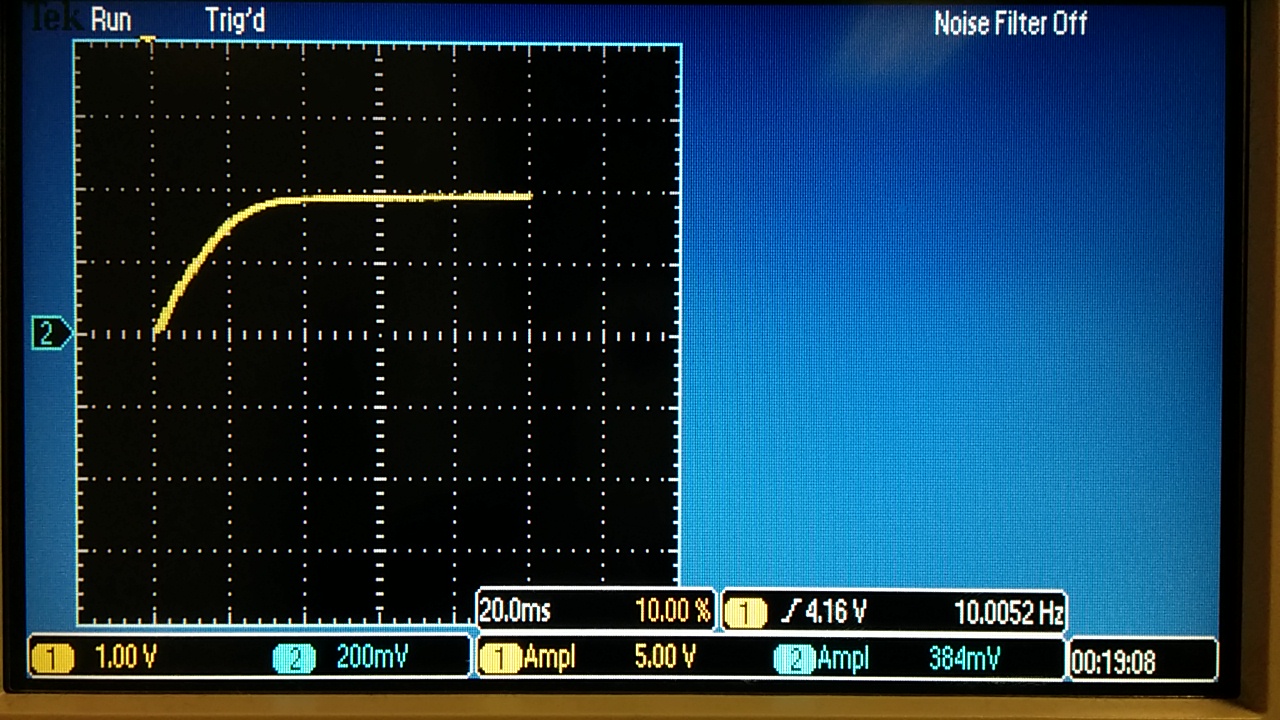
VGS = 5V
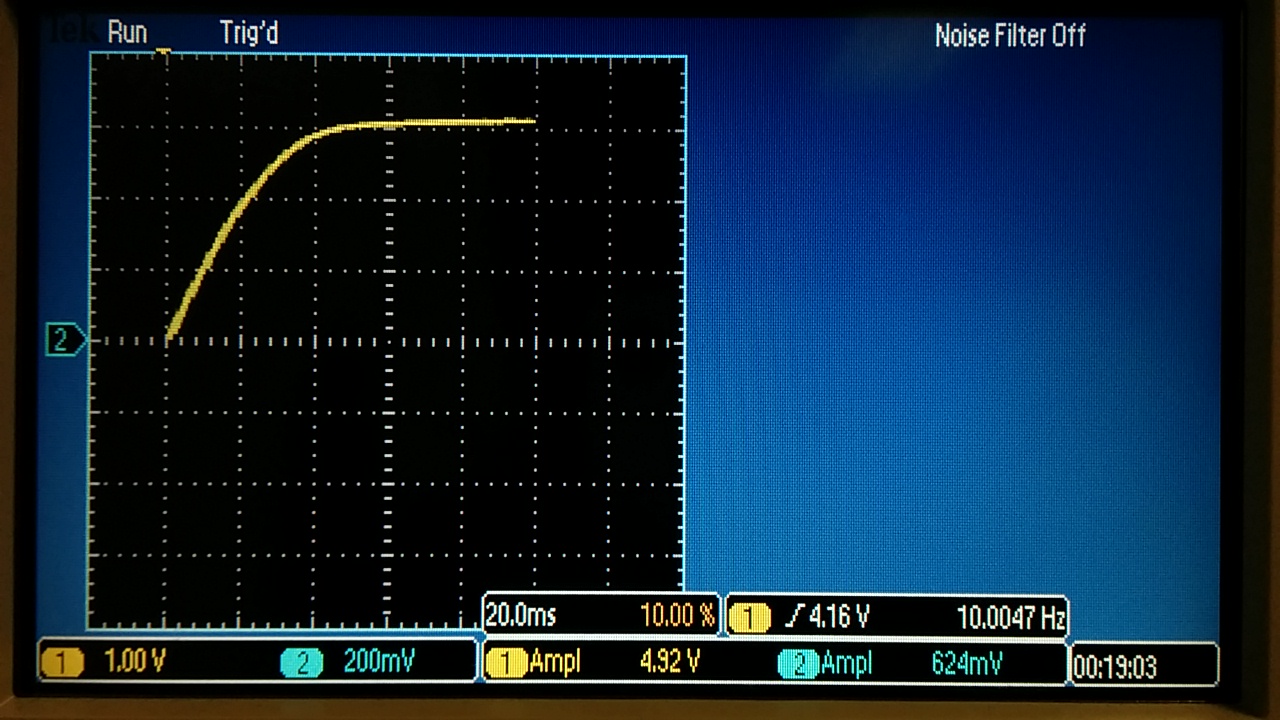
VGS Combined

Experiment 3:
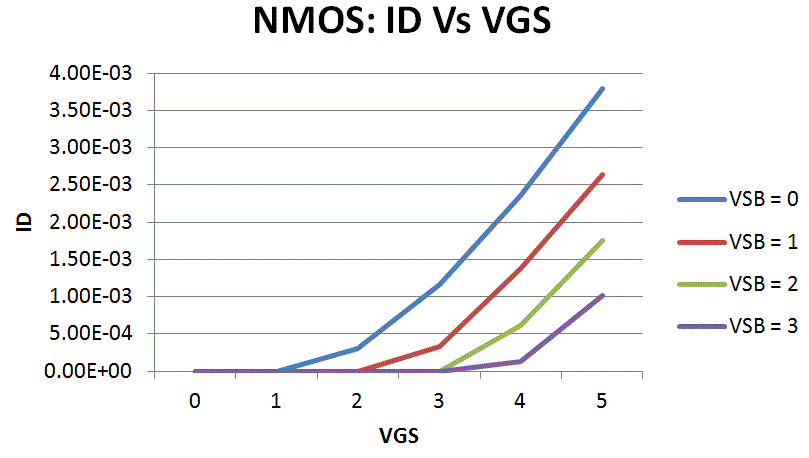
PMOS
Experiment
1: sample
resistor = 200 Ohm

Experiment 2:
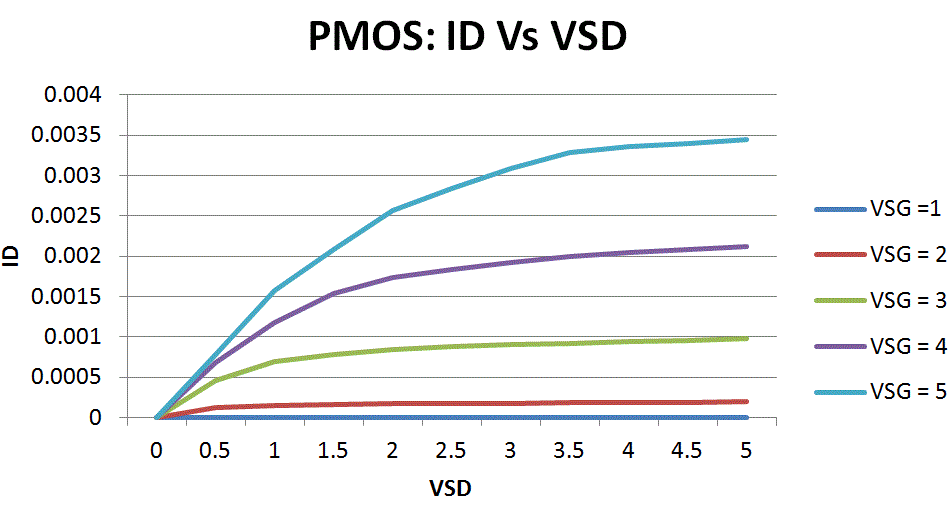
Experiment 3:

Hand Calculations

Basic Level = 1 MOSFET Model before
modifications
After comparing my simulations to the experimental results, I observed
that the simulations
current 'Id' was off by a factor of about 1.5 for the NMOS and that the
bias voltage sim did
not completely match. I compensated for this error in the KP and Gamma
value for NMOS. Similarly,
I changed the values of the PMOS KP to better match my experimental
data. The new modified model
is provided here.
Sim Experiment 1 NMOS

Sim Experiment 2 NMOS
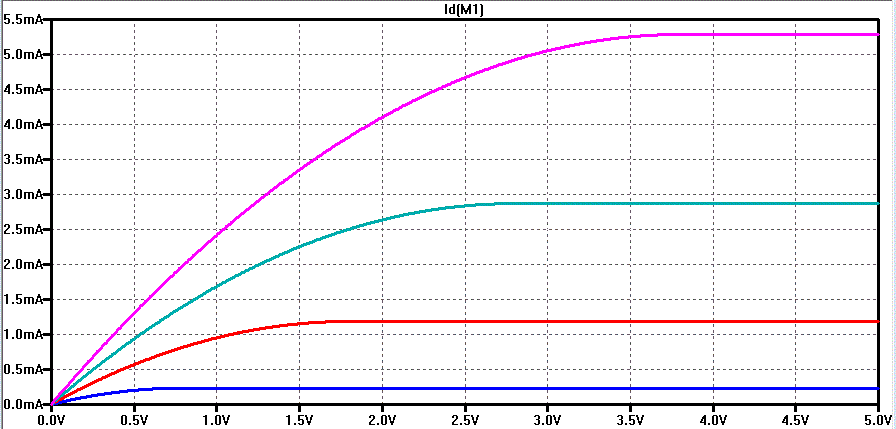
Sim Experiment 3 NMOS

Sim Experiment 1 PMOS

Sim Experiment 2 PMOS
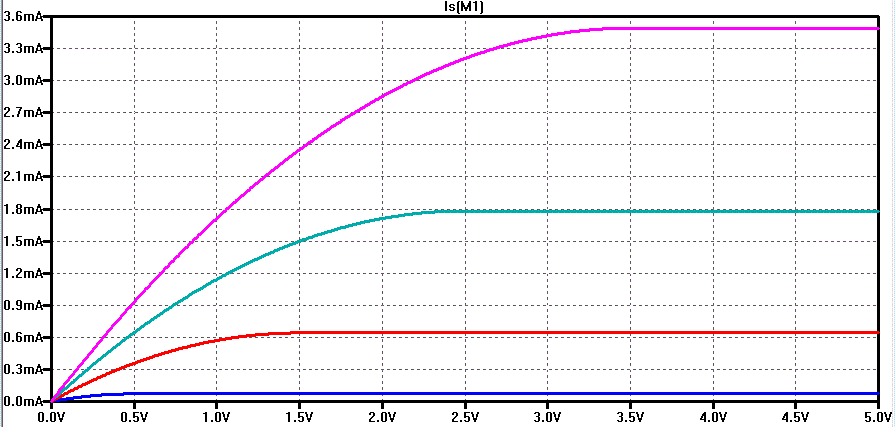
Sim Experiment 3 PMOS

Inverter


Return
to EE 420 Labs










